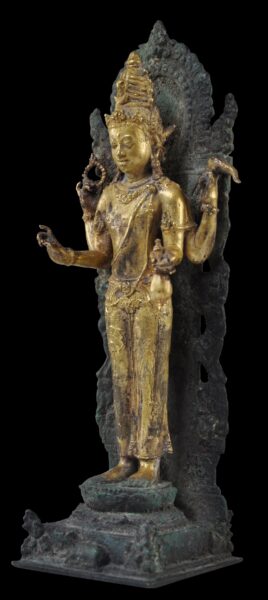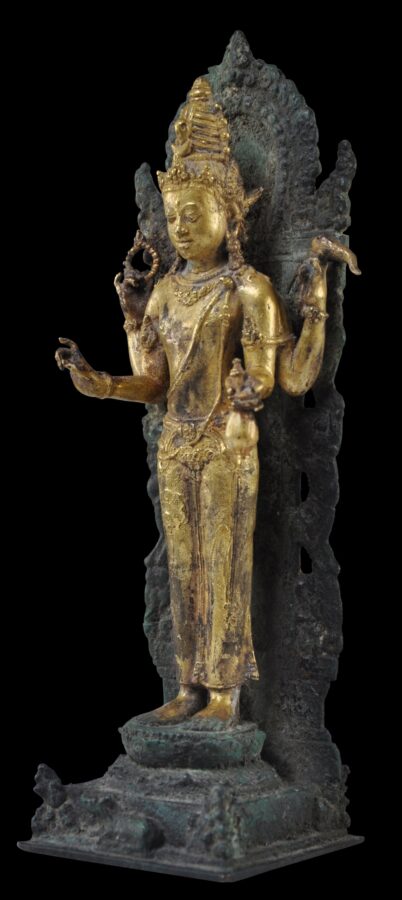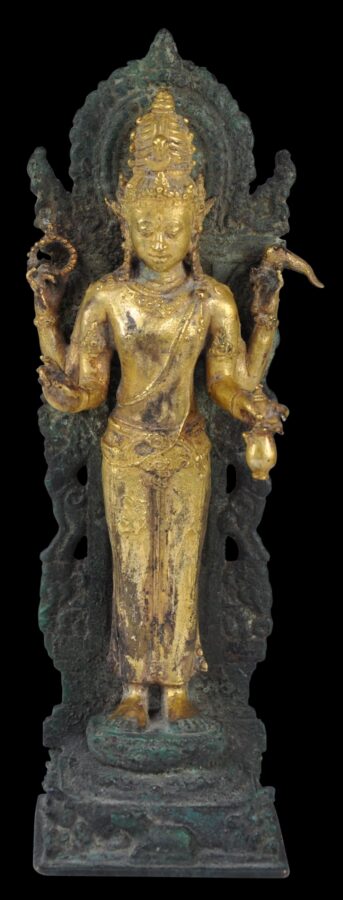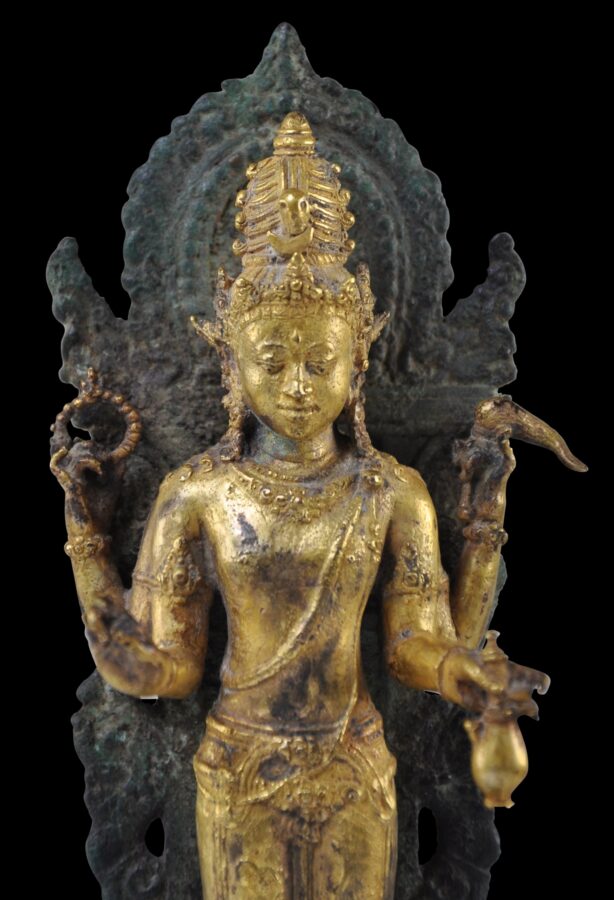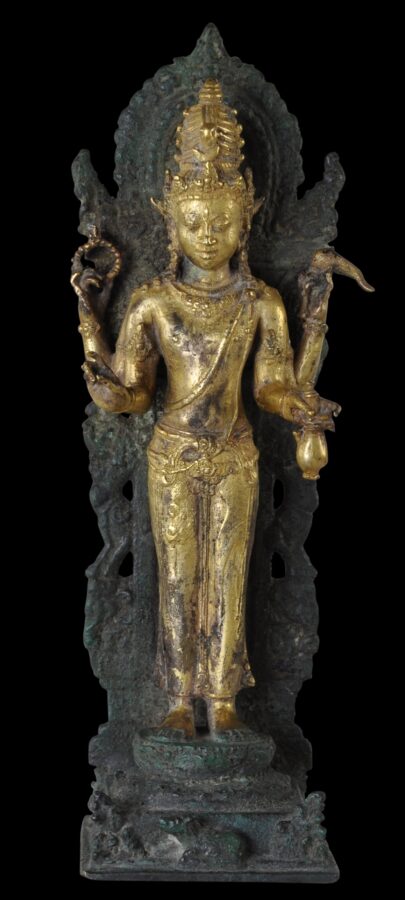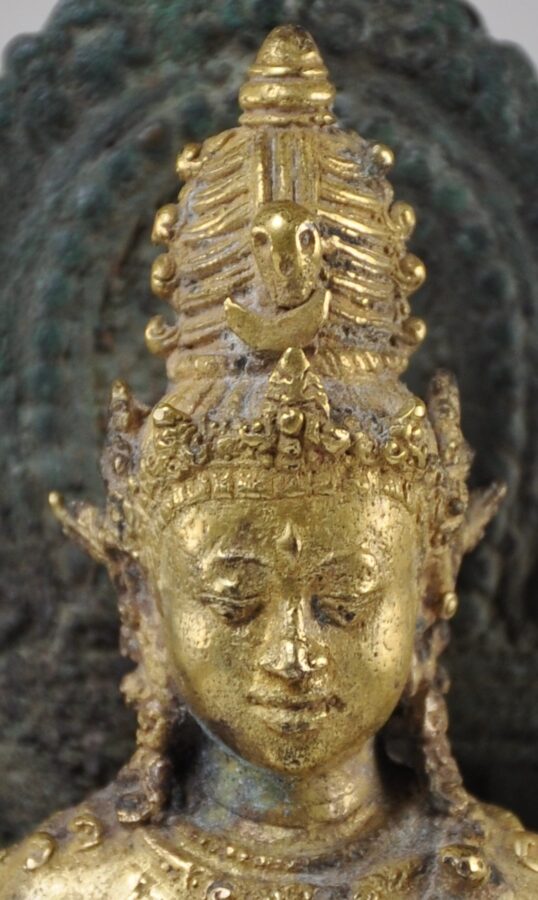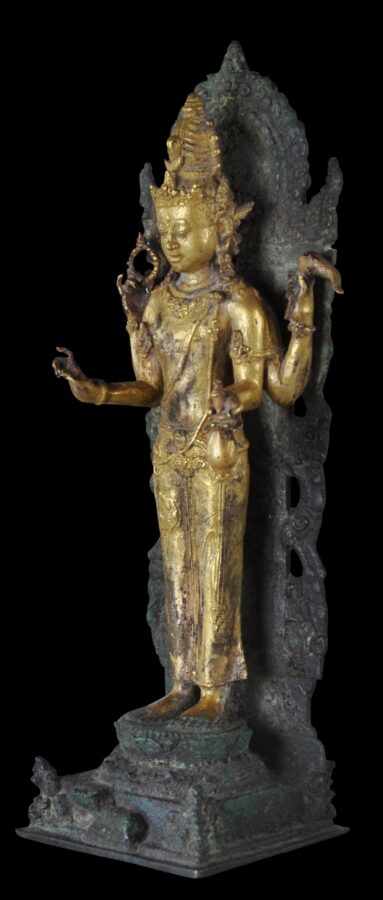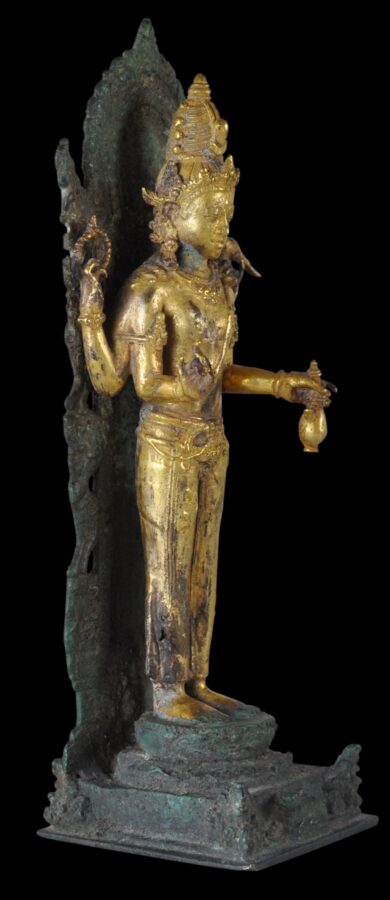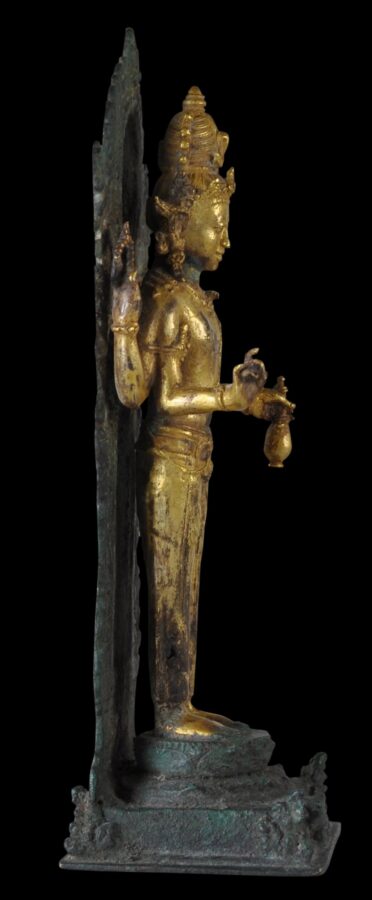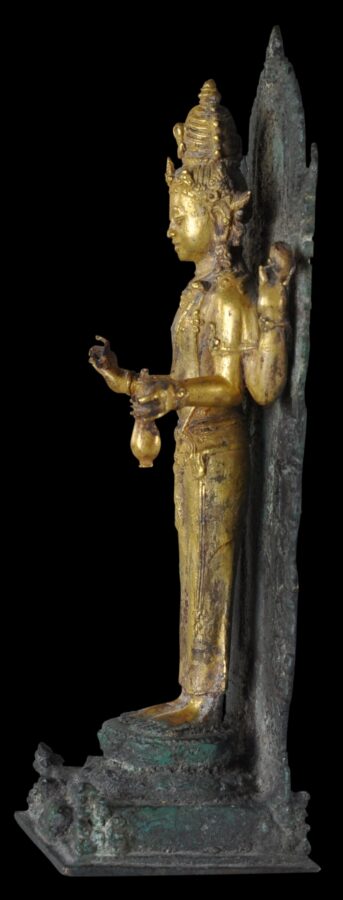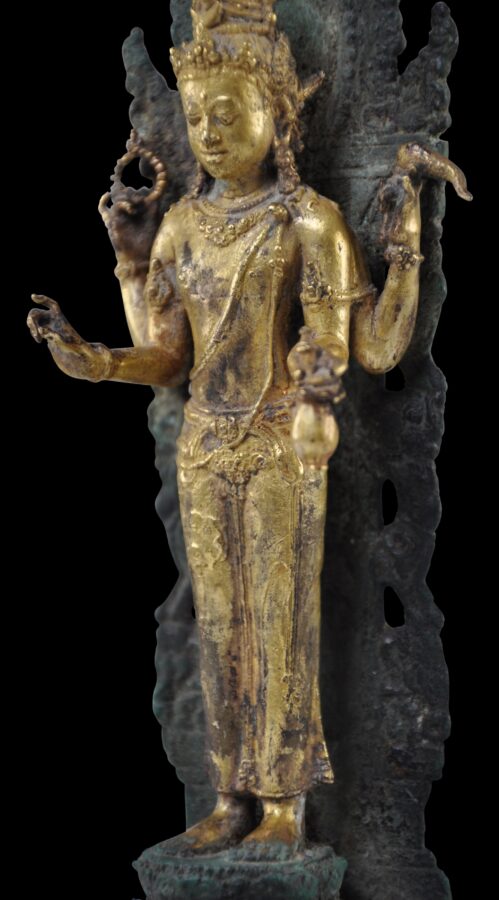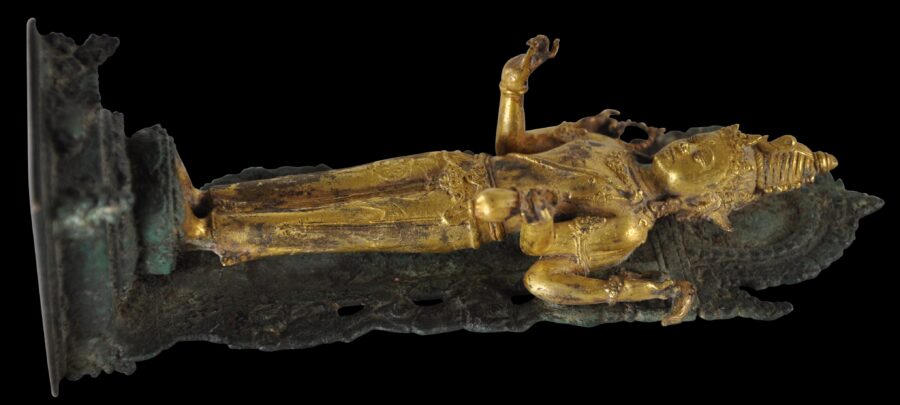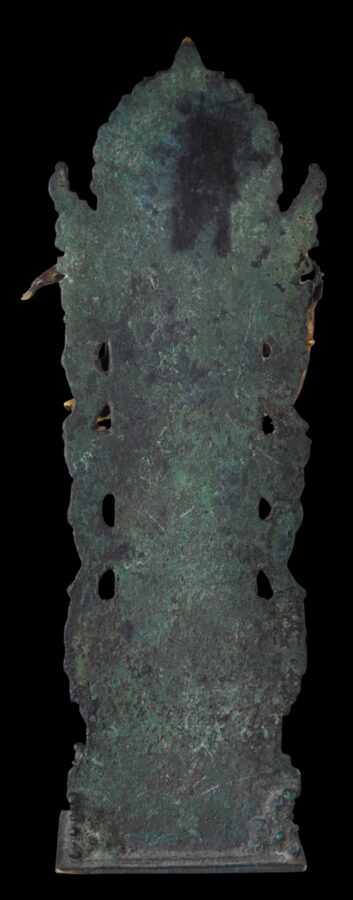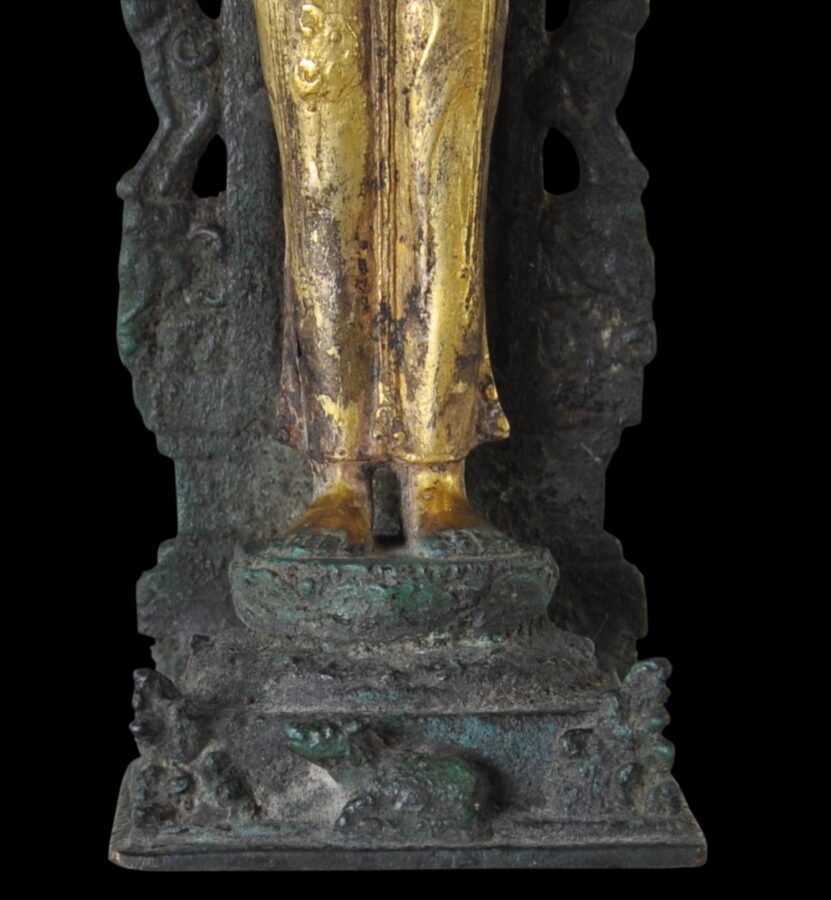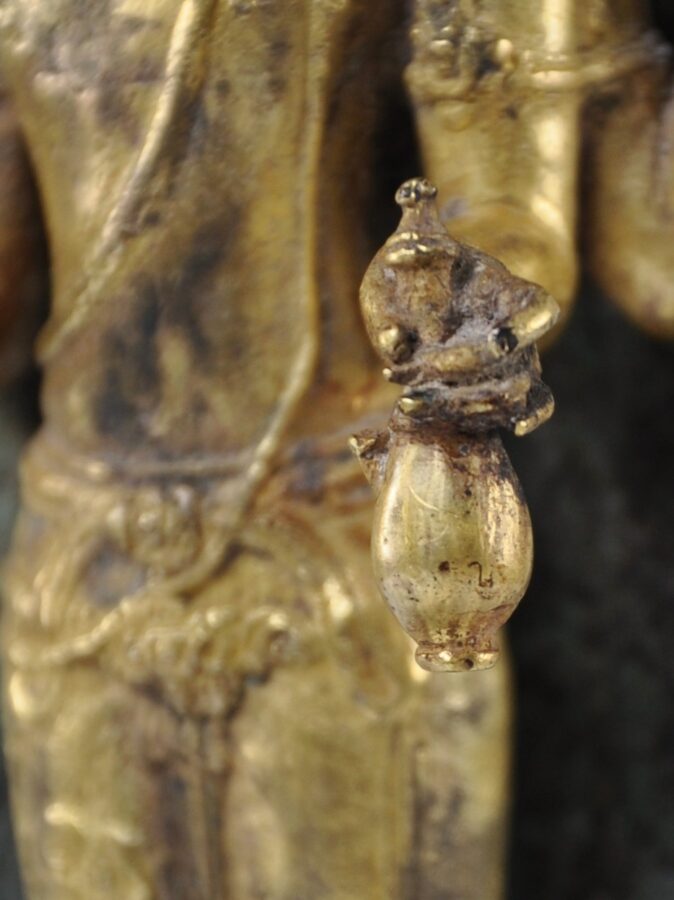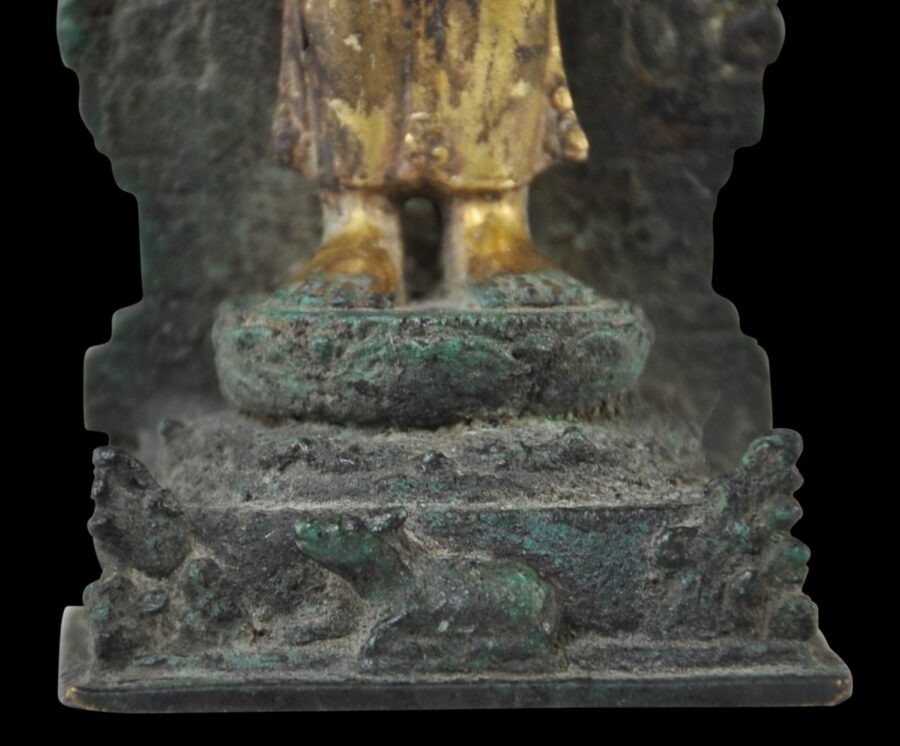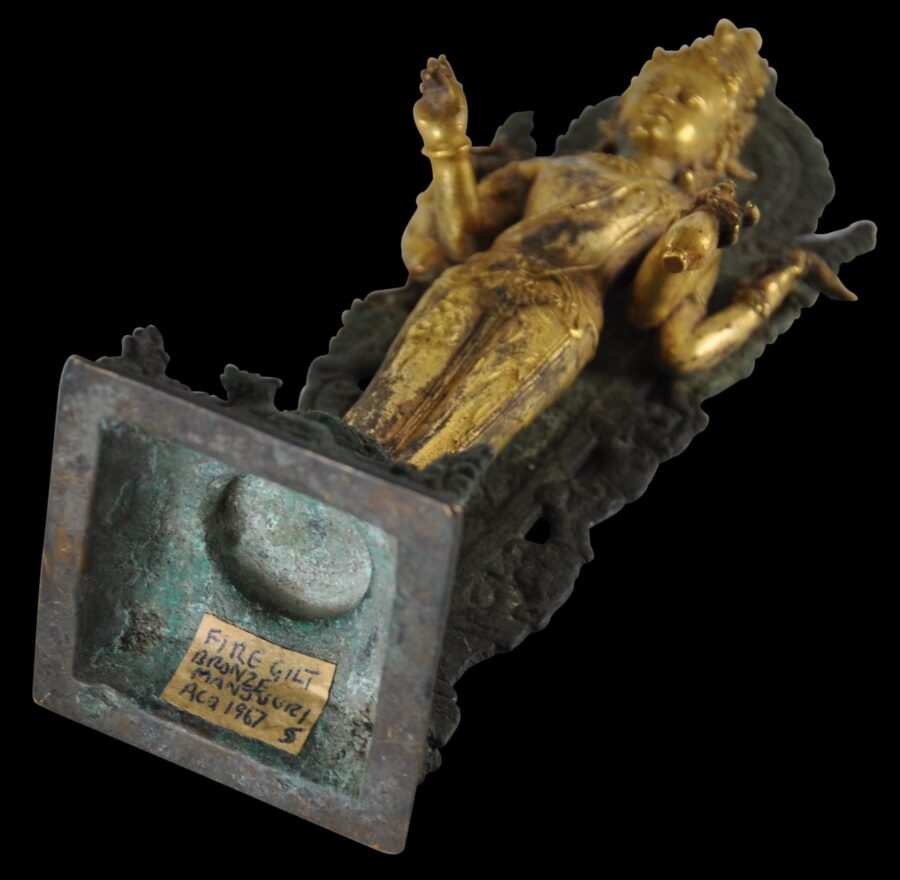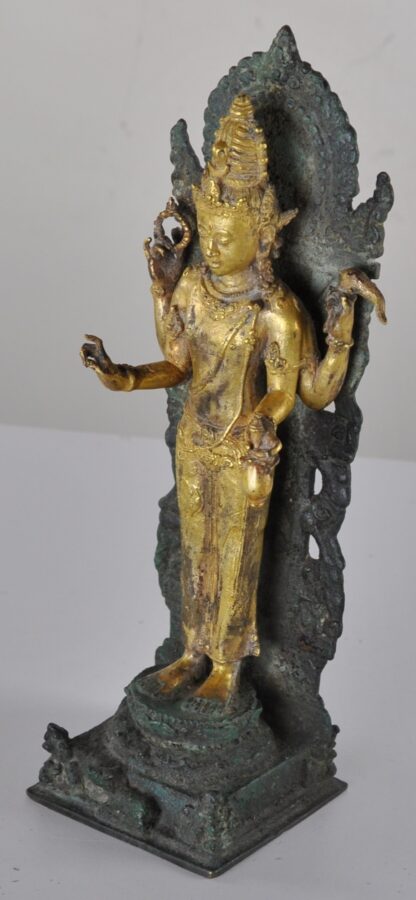Enquiry about object: 8484
Outstanding & Rare Javanese Gold, Gilded & Bronze Standing Shiva Mahadeva
Central Java, Indonesia circa 9th century
height: 16.8cm, width: 5.2cm, depth: 5.4cm, weight: 380g
Provenance
from the estate of the private collector John Bartlett, England, with an old collection label attached indicating that the piece entered the collection in 1967.
This image of the standing Shiva Mahadeva is one of the finest such examples of which we are aware, published or otherwise. It is an outstanding, museum-quality piece from a private English collection. It is believed that the statue joined the collection in 1967.
Shiva Mahadeva is shown standing on a lotus pedestal that is on a square platform with a pierced backing plate and flaming aureole or halo. The front of the platform has been cast with a small sacred bull or nandi figure and each corner has been cast with a triangular, leafy protuberance.
The deity has been thickly covered with gold – so much so that metallic x-ray analysis of the deity suggest that it has a gold component of around 30%. (It is likely that the body is thickly covered in gold and that the detailing around the head is entirely of gold that was then chased and engraved to produce the fine detailing that there is. Wrapping a metal core with gold and then working that gold was a technique used on Java during the period – see a sceptre in The Met in New York for an example.)
Shiva’s face is particularly fine and naturalistically rendered. The eyes are downcast and there is a third eye on the forehead. The headdress is tall with twists of hair piled high upon the head. The image wears a diadem over the forehead and matching leaf-like ornaments (sumping ron) emanate from the tops of the ears.
Another measure of the quality of this piece is the sensitive modelling of the hands and fingers, the well-observed detailing of the jewellery and the complexity of the headdress.
The four-armed deity is dressed in royal attire. The left arms hold a fly whisk (camara) and a kendi-like vessel (kamandalu) which contains the elixir of life. The upper right hand holds a rosary. The lower left might have held a trident that is now missing.
The sacred thread (upavita) is in the form of a cobra with the head of the snake appearing towards the left shoulder.
A plain cord runs from the right hip, over the groin and up the left side of the deity, to the left shoulder. It is fixed with a jewelled clasp.
A tiger skin is just visible over the lower-body garment that covers the legs. The head of the tiger skin rests on the right thigh.
The finely cast feet stand in samapada – in a parallel position.
There are small authenticating details to the piece. For example, sitting atop the crescent on the headdress is a skull. This is a combined motif known only on Java, compared with say India where the two motifs always appear separately, and it has only relatively recently been recognised that this is a motif common to some images on Java (and only Java.) Also, the front of the body of the kendi vessel held in Shiva’s lower left hand is inscribed with a tiny question mark-like sakti symbol – so small that it is barely visible to the naked eye. The sakti is a motif suggestive of a flame and so is a symbol of strength and radiance (Polak, 2022, p. 193).
The skull-above-the-crescent-moon motif is only known on Central Java images from this period and only on two deities: Shiva and Ganesh (Lunsingh Scheurleer, 2012, p. 22). Says Lunsingh Scheurleer, ‘that the two attributes – the moon and the skull – are merged on Java to form a single emblem is unusual enough in itself’.
The image has the slimmer anatomy associated with Javanese images of the period. It stands on a drum-shaped bronze throne, cast with lotus petal motifs, also in keeping with images from the period.
This example is very similar iconographically to an example in the National Museum of Jakarta which is of bronze with gold and silver inlay and which is more than one metre tall. That example is regarded as one of the finest Javanese bronzes of the period known, even though it has lost its backing plate, stand and two of its attributes. See also a smaller and gilded example in The Met.
The image here was cast using the lost-wax process in two pieces. The image and the platform on which it stands was cast as one. The image itself was then wrapped with gold which was then chased and engraved to provide all the detailing. The detailing extends to the back of the image which is only just visible in the gap between it and the backing plate. The backing plate was then cast separately and soldered to the base.
Gold figures from Java from this period to appear from time to time (here is an example) but rarely are they of this size and quality.
A related (though lesser) example is illustrated in Pal (1997, p. 107).
The interior of the base is fixed with an old collection label which reads: ‘Fire gilt bronze Manjusri acq. 1967’. The reference to fire gilding seems incorrect. The image is more likely to have been cold gilded – covered with sheet gold and gold leaf, so that the gold on the surface was thick enough to be worked. The reference to Manjusri is also incorrect. Manjusri is a bodhisattva usually associated with Tibetan Buddhism. This perhaps explains the belief that the statue had been fire gilded – a technique more common in Tibet. So it seems the image has been in the previous private collection for more than 50 years but its origins were incorrectly identified. Indeed the collection comprised mostly Himalayan artworks.
The patina of the image here is excellent. The image itself shows minor degradation beneath the gold, most particularly to the right leg. The bronze platform and backing plate have a superb, deep, variable crystalline-green patina. The extremities have developed an almost translucent crystalline quality, most evidenced by the nandi figure at the front of the platform, which has an emerald-green hue.
Overall, this is one of the finest Javanese bronze and gold images we know of.
References
Fontein, J., et al, The Sculpture of Indonesia, National Gallery of Art, Washington, 1990.
Kal, W.H. (ed.), Precious Metals in Early South East Asia: Proceedings of the Second Seminar on Gold Studies, Royal Tropical Insirite, 1999.
Lunsingh Scheurleer, P., Gold from Java/Goud uit Java, Gemeentemuseum Den Haag/W Books, 2012.
Pal, P., A Collecting Odyssey: Indian, Himalayan, and Southeast Asian Art from the James and Marilynn Alsdorf Collection, The Art Institute of Chicago/Thames & Hudson, 1997.
Polak, J., Ancient Indonesian Gold of the Central and Eastern Javanese Periods 750-1550: A Selection, C. Zwartenkot Art Books, 2022.
White, T., ‘Precious metalwork from ancient Champa’, in Arts of Asia, July-August 2002.
Yahya, A., et al, Archipel: Indonesia – Kingdoms of the Sea, Snoeck, 2017.


